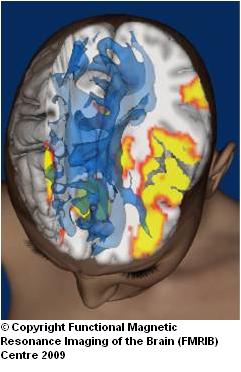Pain is an unpleasant and distressing experience and it can be hard to understand why the pain is continuing. This article presents a comprehensive overview of the different types of pain and what treatment, if any, is available.
Contents - Freedom from Pain 
- What is pain?
- Types of pain
- Examples of pain
- Pain physiology
- Is pain good?
- Prevalence of pain
- Chronic pain
- The challenge of long term pain
- Treatments
- Summary
What is pain?
The International Association for the Study of Pain defines pain as an unpleasant sensory and emotional experience, which we primarily associate with tissue damage. However, a more useful definition is to say that pain is whatever the patient says it is.
Pain comes in 2 time courses: acute pain and chronic pain. By definition, acute pain lasts for less than 3 months and includes post operative pain, painful medical and surgical conditions such as appendicitis, peritonitis and other acute inflammatory conditions. Chronic pain by definition is pain that lasts for 3 months or more and includes common complaints such as neck pain, lower back pain, joint pain etc.
Types of pain
Pain can be divided into 2 major types; nociceptive or normal pain is where the pain signalling pathways are all intact and this is most commonly found with musculoskeletal pain, e.g. lower back pain and neck pain.
Neuropathic pain, on the other hand, is a form of pain where there is damage and/or dysfunction to any element of the nervous system. Patients usually describe very florid symptoms with this. They will describe their pain as sharp, stabbing, like electric shocks, like hot stabbing pokers or razor blades. They also suffer with a lot of burning pain. In addition to the pain, patients will experience sensory dysfunction where light touch and pinprick sensations will be felt as exaggerated. This can often lead to problems, for instance in showering and wearing clothing where the affected area can be acutely painful. Along with pain, patients often have associated disability. For instance, where a limb movement of the affected area causes pain they will start to disuse the area leading to neglect, muscle wasting and, in extreme cases, fibrosis and contractures. This leads to further disability.
Examples of Pain
- Whiplash injury
- Lower back pain
- Shoulder pain
- Joint pain
- Complex regional pain syndrome (CRPS)
- Industrial accidents
- Post traumatic neuropathic pain
- Post herpetic neuralgia
- Diabetic neuropathy
Pain physiology
The pain signalling pathway is an immensely complex neurophysiological system. In essence, there are pain receptors that are receptive to motor, thermal and chemical stimuli found throughout the body, both peripherally and in the internal organs. These are connected by fibres back to the spinal cord. In the spinal cord pain transmission can be modulated, either amplified or depressed, by a number of local ascending and descending inhibitory and excitatory neural circuits. After this modulation the pain signal is transmitted up through the spinal cord via 5 different tracks, the most common of which is the spinothalamic tract.
Is pain good?
These pain fibres then end up in about 5 different areas of the brain as there is no central pain processing area. These discrete areas process different aspects of pain including location, intensity, type, character, emotional response and other valuable information. Teleologically, pain has been developed in organisms to avoid harm. For instance, if a limb is injured there is an initial reflex action to remove the limb from danger. If it is injured, the pain will signal to the organism not to use that area until it has healed.
Prevalence of pain
To give an example, in a busy hospital such as St Mary's Hospital in London, over 13,000 operations are performed per year. A significant number of these will require analgesic medication in the post operative period to ease pain.
Chronic pain
The figures state that one in seven of the UK population lives with chronic pain. This equates to approximately 7-14% of the UK population and these findings are similar across the western world.
The challenge of long term pain
Pain affects patients on a number of different levels and clinicians therefore assess pain using what is called a biopsychosocial model, which takes into account the following factors:
- Biologically, patients suffer with pain and disability.
- Psychologically, they have higher levels of anxiety and depression.
- Socially, pain can lead to relationship difficulties, difficulties in the workplace and can often lead to patients struggling to cope with family and working life, and physical deterioration. In severe cases they may end up needing to claim welfare benefits.
Treatments
Physical and alternative treatments:
- Physical treatments for pain include heat packs, cold packs, TENS machines, hydrotherapy support, ultrasound and infrared.
- Manipulation techniques include physiotherapy, chiropractic, osteopathy and deep tissue massage.
- Alternative treatments include acupuncture.
For pain treatment we use the Abridged WHO Analgesic Ladder:
- Step 1 for mild pain includes Paracetamol, non-steroidals and COX-2 inhibitors.
- Step 2 is Step 1 plus the addition of weak opioids including Codeine, Dihydrocodeine and Tramadol.
- Step 3 includes Step 1 and the addition of strong opioids including Morphine, Oxycodone and Buprenorphine etc.
In the past few years there has been an increasing use of opiates, that is Morphine-like drugs, in the treatment of chronic non-malignant pain. This has in some way been down to some of the more deleterious and irreversible adverse effects of the non-steroidal and cyclo-oxygenase inhibitor medications, which in long term use have been associated with renal impairment and an increase in strokes and heart attacks.
Medication for neuropathic (nerve) pain
These medications are drugs that are generally used for other purposes but that have been found to be useful in neuropathic pain. Examples include:
- Antidepressants, e.g. Amitriptyline.
- Anticonvulsants, e.g. Gabapentin, Pregabalin, Carbamazepine, Valproate.
- Opioid Medication, e.g. Morphine, Oxycodone, Buprenorphine.
- Local Anaesthetics, e.g. Lignocaine patches.
- Other Agents, including NMDA antagonists, Sympatholytics, GABAergics and Capsaicin.
The pharmaceutical industry has a significant interest in medications for neuropathic pain, as it is seen as a significant market. Agents include Ziconotide, preparation from sea snail toxin, Epibatidine preparation from the Ecuadorian poison dart frog and other preparations in the pipeline.
It is often necessary to use psychologically based therapies including CBT (cognitive behavioural therapy), conditioning, psychoanalysis, relaxation and biofeedback. Only very rarely is it necessary to involve psychiatric input, in particular where clients have suicidal ideation or there is an underlying significant psychiatric problem such as severe depression or schizophrenia.
Pain management programmes seek to teach patients, usually in groups on an inpatient or outpatient basis, a variety of self help techniques to help them manage their pain more efficiently. These sessions are done with a multidisciplinary team, usually comprising of a doctor, specialist pain nurse, physiotherapist, occupational therapist, pharmacist and other staff. Techniques taught include management of medication, coping strategies and contingency plans, pacing of activity, education of patients regarding their pain, teaching patients goal setting and trying to break certain negative pain behaviours.
Minimally invasive pain management
There are a number of different procedures that are used either with or without x ray guidance.
Minimally invasive pain management procedures for musculoskeletal pain include:
- Epidurals.
- Facet joint injections.
- Nerve root injections.
- Suprascapular nerve blocks.
- Obturator nerve blocks.
- Intra-articular injections.
Minimally invasive pain management procedures for neuropathic pain include:
- Intravenous Guanethidine blocks (IVG).
- Lumbar sympathectomy.
- Stellate ganglion nerve blocks.
- Ganglion of Impar.
- Occipital nerve blocks.
Most of these procedures are performed under x ray guidance and can usually be done either with the patient awake under local anaesthesia or the addition of a small amount of sedation. Most of the procedures involve the injection of mixtures of local anaesthetic and long acting steroid preparations.
Another technique, which has been around since the 1950's is the use of radiofrequency technology. This can be used as a destructive mode (radiofrequency denervation), for example in lumbar facet joint pain to destroy the local pain mediating nerve, or can be used in a non-destructive mode (pulsed radiofrequency) for areas of neuropathic pain. In the destructive mode nerves are actually destroyed with the application of an electric field at high temperature. In a non-destructive mode pulses of an electrical field are passed through the local nerves and there is excellent basic science evidence of the beneficial effects of pulsed electrical fields on nerve membranes including stabilising them, reducing their activation threshold and reducing the amount of spontaneous activity in them.
Advanced pain management techniques
There are a number of other techniques such as kyphoplasty and vertebroplasty. These are percutaneous techniques for patients who have vertebral crushed fractures, either secondary to malignancy, osteoporosis or trauma, in which bone cement under x-ray control is inserted into the lumbar vertebral bodies.
Spinal cord stimulation is an advanced technique for patients who have pain that has not responded to medication or minimally invasive pain management procedures, e.g. patients who have CRPS that is refractory. In this, electrodes are placed adjacent to the affected target area of the spinal cord. The electrode leads are buried under the skin and tunnelled to a pocket in the anterior abdominal wall where there is a battery pack and a small computer. The electrode array can then be controlled in terms of frequency, voltage, bursts of activity and electrode array pattern.
Yet other advanced techniques include the role of intrathecal pumps. These again are implanted devices where a small cannula indwells in the intrathecal space and the reservoir containing opiates, Baclofen or other substances are slowly delivered into the central nervous system via the cerebral spinal fluid.
Summary
In summary, pain is very common. It has a time course of acute and chronic pain. Chronic pain affects up to one in seven of the UK population. There are two major types of pain; nociceptive and neuropathic pain.
Overall, it has a massive socio-economic impact. There are multiple treatment modalities and often the best form of treatment is to use combinations of treatment including medication, minimally invasive pain management procedures, physiotherapy based rehabilitation and any psychological input that may be required.








